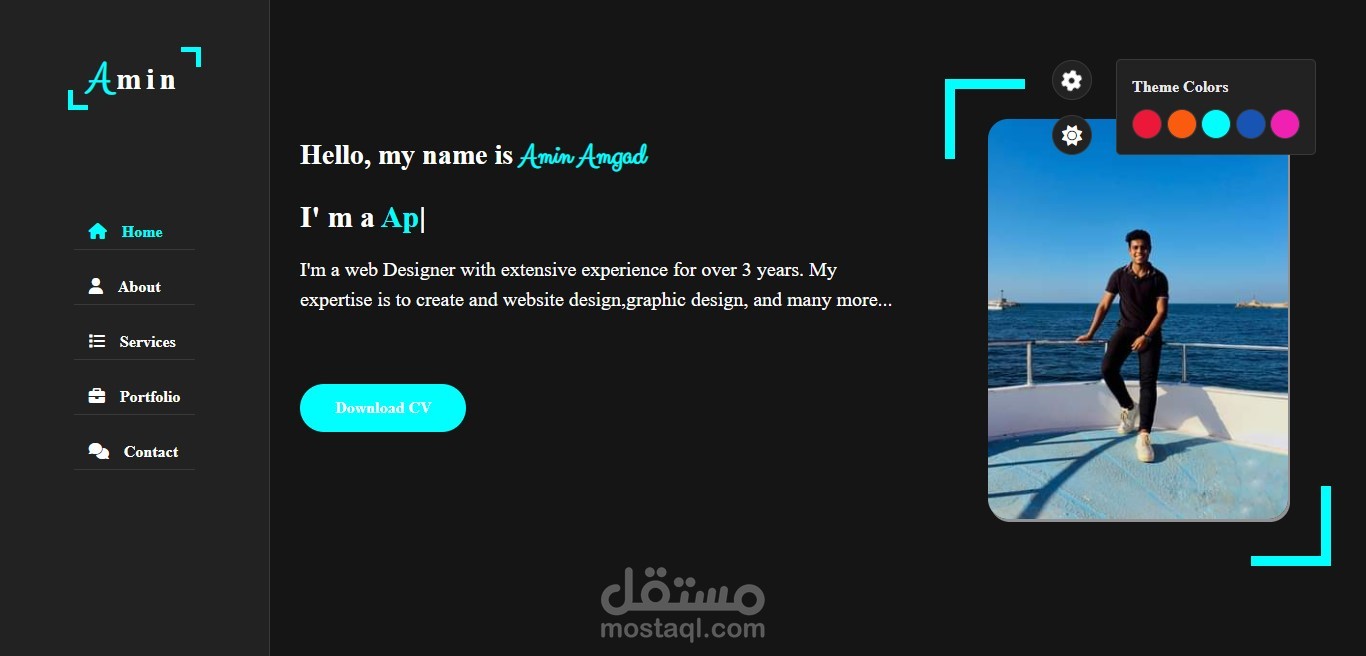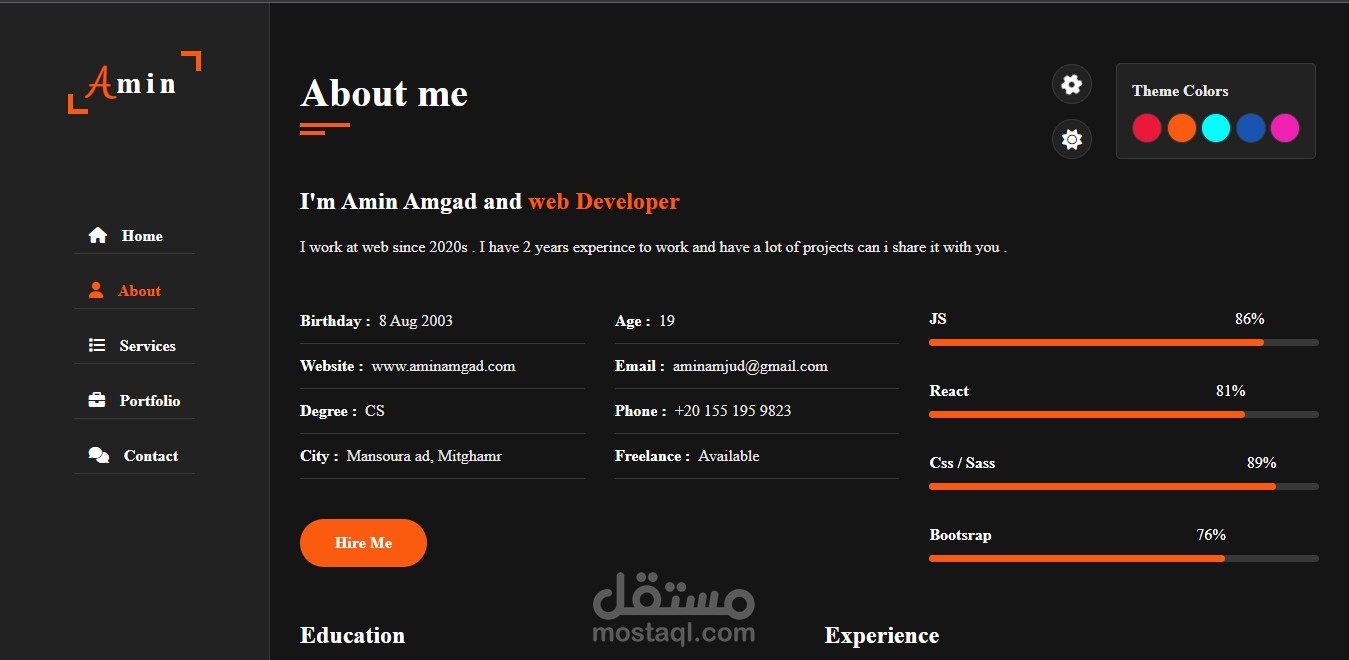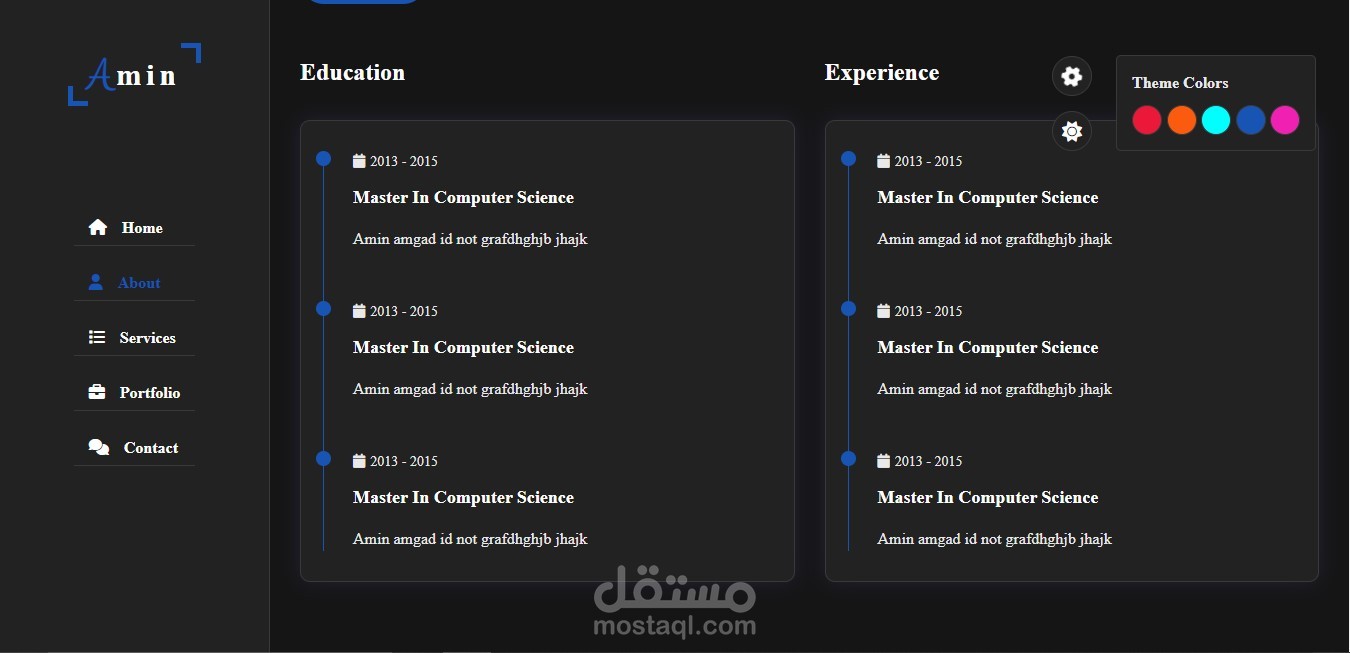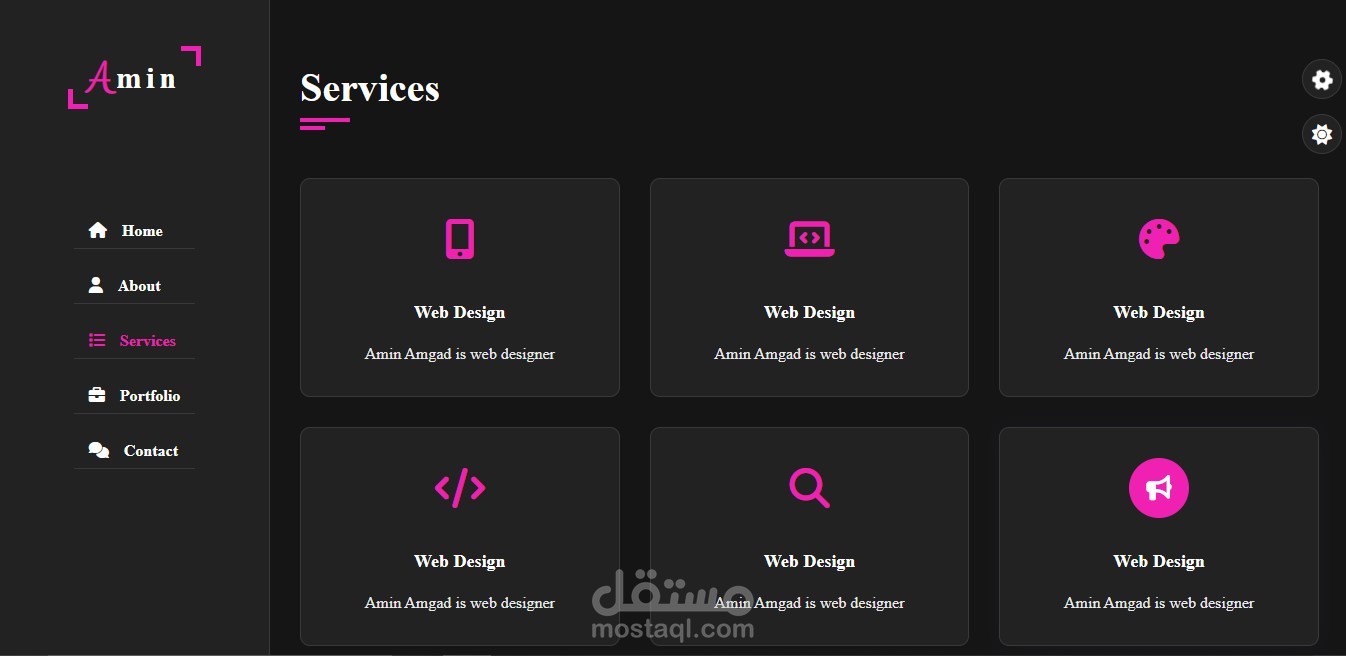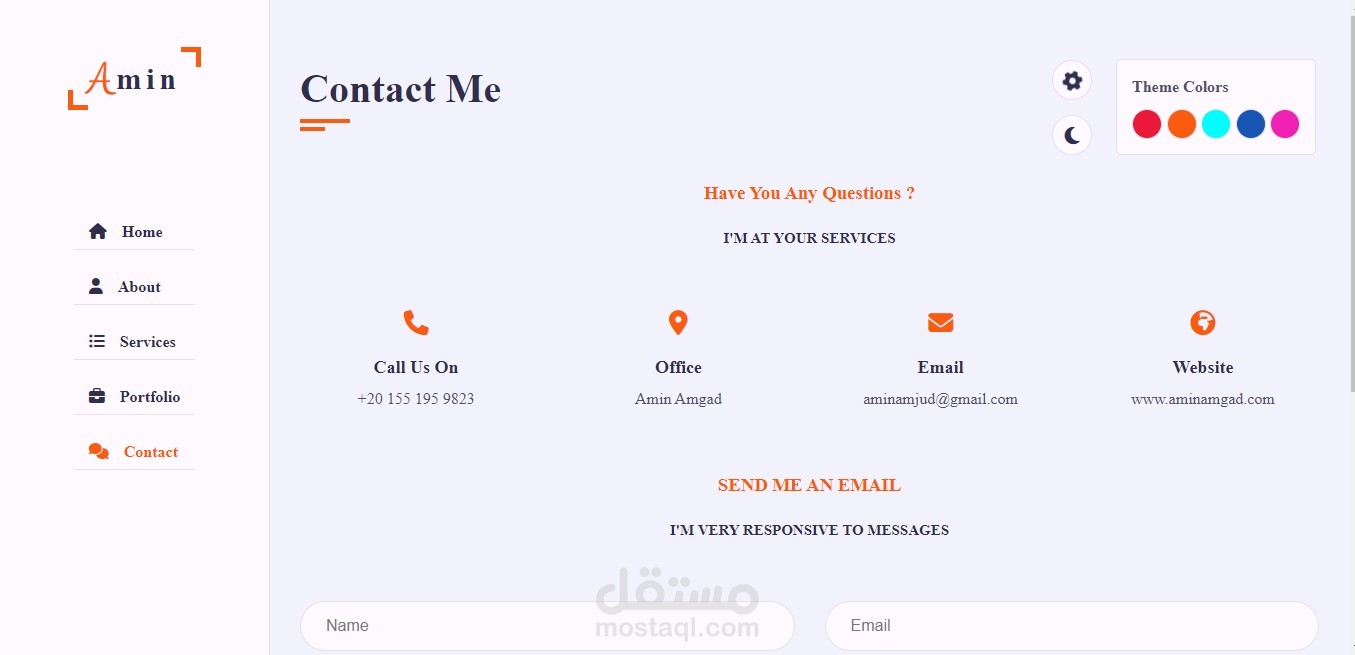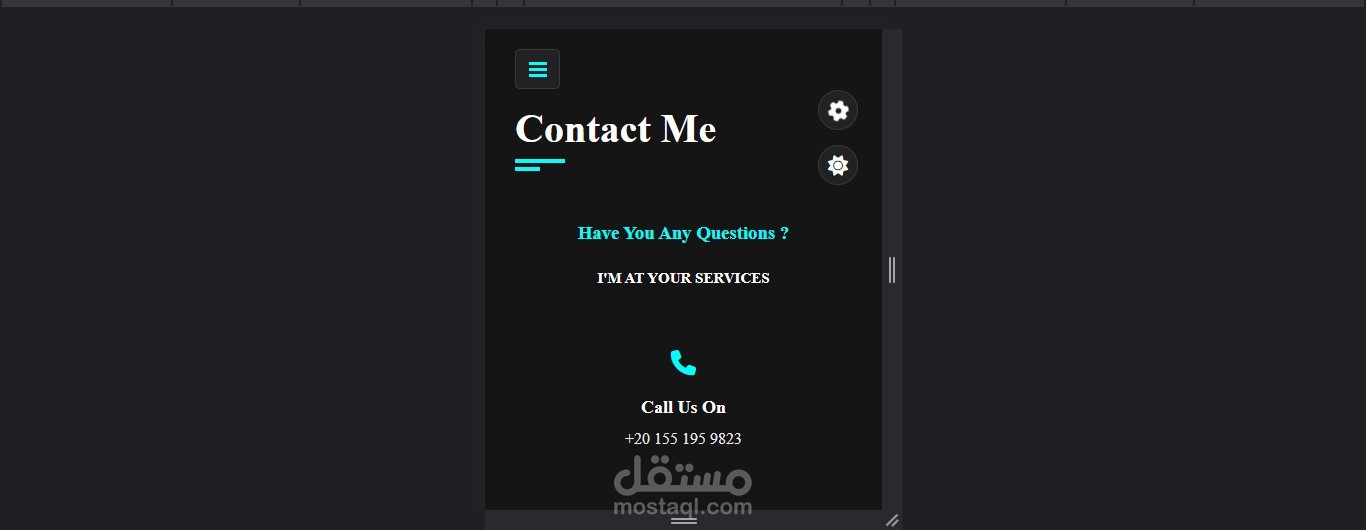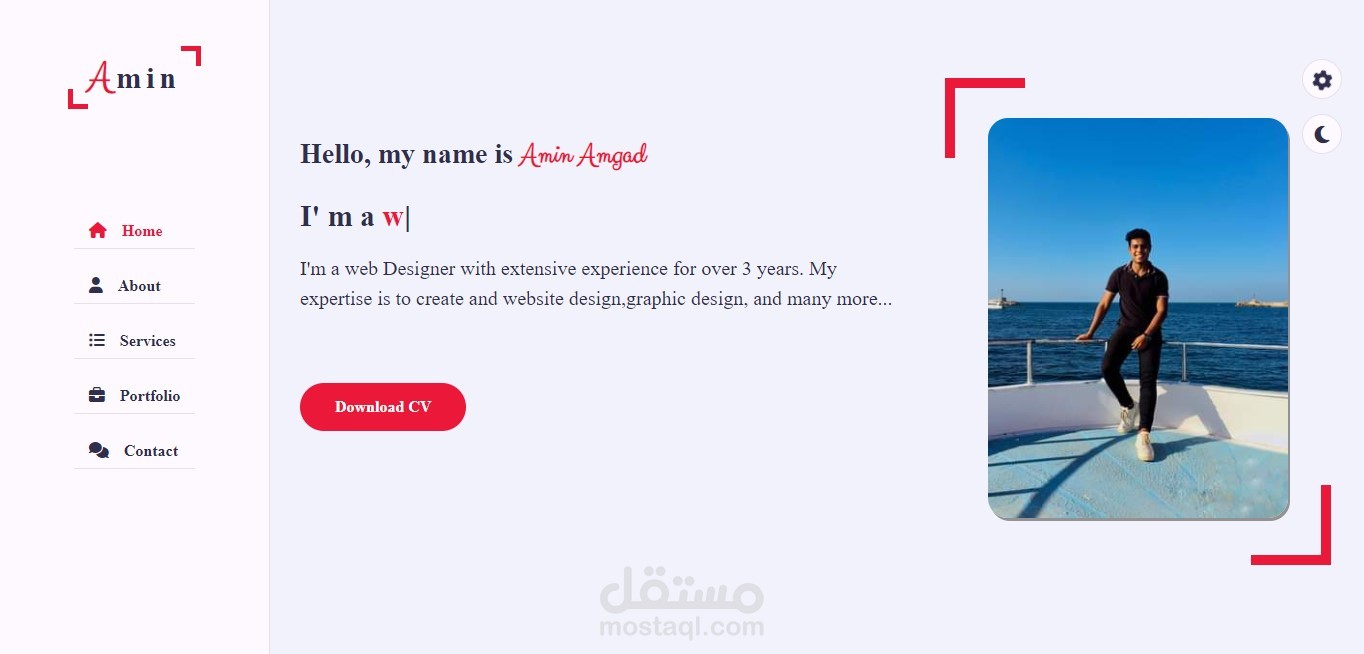portfolio
تفاصيل العمل
A portfolio website is a digital platform that showcases an individual's or a company's work, skills, achievements, and services to potential clients or employers. It serves as a professional online presence, allowing visitors to gain insight into the portfolio owner's capabilities and expertise.
Key Features of a Portfolio Website:
1. Home Page: An engaging and visually appealing landing page that provides an overview of the portfolio and grabs the visitor's attention. It may include a brief introduction, key highlights, and a call-to-action to encourage further exploration.
2. About Me/Us: A section dedicated to providing information about the portfolio owner. It typically includes a personal or company bio, background, skills, experience, and a compelling story that sets the portfolio apart.
3. Work/Projects Showcase: This section showcases the portfolio owner's best and most relevant work or projects. Each entry includes project descriptions, images, videos, testimonials, and links to the live websites or demos, if applicable.
4. Services Offered: If the portfolio owner is offering services, this section provides details about the specific services, packages, or solutions available. It may include pricing, project scope, and client success stories.
5. Testimonials: A collection of testimonials or client reviews that highlight the portfolio owner's professionalism, expertise, and the value they provide. This helps build trust and credibility among potential clients.
6. Contact Information: A dedicated section with contact details such as email, phone number, and social media profiles. Additionally, a contact form can be included to facilitate direct communication.
7. Responsive Design: Ensuring the portfolio website is optimized for various devices and screen sizes, providing a seamless user experience across desktops, laptops, tablets, and mobile devices.
8. Blog/News Section (Optional): If relevant, a blog or news section can be included to showcase thought leadership, industry insights, or updates about the portfolio owner's work or services.
Benefits of a Portfolio Website:
1. Professional Online Presence: A portfolio website establishes a strong online presence, making it easier for potential clients or employers to find and evaluate the portfolio owner's work.
2. Showcasing Skills and Expertise: It allows the portfolio owner to showcase their skills, talents, and expertise in a visually appealing and organized manner, making a strong impression on visitors.
3. Increased Visibility: A portfolio website can improve search engine visibility, enabling potential clients or employers to discover the portfolio owner through relevant search queries.
4. Personal Branding: It helps in creating a personal or professional brand, highlighting the unique qualities and strengths of the portfolio owner.
5. Business Growth: A well-designed and informative portfolio website can attract new clients, projects, or job opportunities, leading to business growth and career advancement.
Remember, a portfolio website should be visually appealing, user-friendly, and regularly updated with the latest work and achievements. It should reflect the portfolio owner's unique style, personality, and professional goals.
